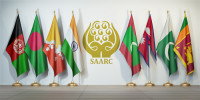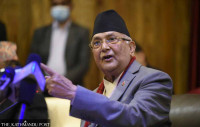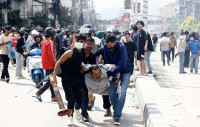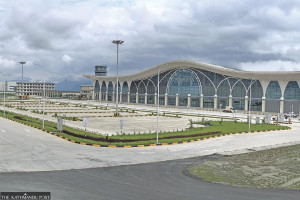Opinion
The buck stops here
The time has come to deal with all the outstanding issues between Nepal and India at the top political level
Kamal Dev Bhattarai
There has been intensive engagements between Nepal and India at various levels during the last six months. They range from meetings between the top political leadership to technical committees in the bureaucracy. Routine meetings of more than one dozen bilateral mechanisms responsible for settling a wide range of bilateral issues at the implementation level have been held during this time.
The latest conference is the one between the Joint Commissions (JC) of the two countries led by their respective foreign ministers. It is the highest body mandated to review all bilateral issues and move forward. It is very positive that an environment of trust has been created at both the political and bureaucratic levels. But when we talk about resolving outstanding issues between the two countries, there is little or no progress. However, during these meetings, both sides have candidly presented their respective positions on all bilateral issues.
The credit for taking the lead in resolving bilateral issues even before Prime Minister Pushpa Kamal Dahal’s visit to India goes to Foreign Minister Prakash Sharan Mahat. Mahat clearly presented the issues while keeping the national interest at the top. However, progress on the ground has been dismal with regard to completing large connectivity, trade and other physical infrastructure projects.
Another positive aspect is that both sides have realised that many pending projects are not making any progress and thus, have set up an oversight mechanism to monitor the implementation of the projects. The new mechanism should not meet the fate of other bilateral mechanisms which have made no substantial progress. The new mechanism should make a difference in the completion of big projects at the stipulated time.
The long list
Border disputes and management is one of the contentious outstanding issues between the two countries. The management of an open border is a big challenge for both. There is a need for close collaboration in the field to control cross-border terrorism, circulation of fake currency notes and human trafficking, among others. Despite several rounds of meetings, there has not been satisfactory progress at the local level. Another issue is the settlement of the border dispute between the two countries at Susta and Kalapani. There has been no progress in settling the Susta and Kalapani problems in the last decade. The two countries agreed to hold meetings at the foreign secretary level to settle them. But unfortunately, not a single meeting has been held. The border issue has become a hitch in bilateral relations. If it is resolved, it will help to improve ties.
The bilateral mechanisms have only been looking after occasional technical problems at the grass-roots level. India and Bangladesh have resolved their long-standing boundary dispute. Why can’t Nepal and India do the same? Similarly, there are several issues related to power and water resources which have not been resolved even after several rounds of meetings. In 2014, Nepal and India signed a power trade agreement, but many technical details are yet to be settled. Despite a series of negotiations at various levels, the issue of free access to electricity has not been resolved. Similarly, the finalisation of a joint detailed project report (DPR) of the Pancheshwor Development Authority remains elusive. The construction of an oil pipeline has not been making satisfactory progress as well despite several rounds of formal and informal talks at the bureaucratic level. Also, there has been no progress regarding the implementation of an Energy Bank.
With respect to flood and inundation, both sides have agreed to do joint inspections. The recently concluded JC meeting reiterated the need to hold joint inspections at a mutually convenient time, which simply means another postponement. Several other technical issues related to the Postal Highway, Gandak Project, Koshi Project, Saptakoshi High Dam and Tanakpur Barrage are yet to be resolved. There are a number of issues related to trade and transit and connectivity projects such as railways and roads, among others, which are not making satisfactory progress. And the list could go on.
Time to reflect
In this context, a lot of thought needs to be devoted to why projects have not been completed at the agreed time and why many bilateral issues are always outstanding. Such instances have caused ties between the two countries to sour. Holding bilateral meetings and intensifying engagements is not sufficient and this cannot solve the problem. It has already been proven that holding routine annual meetings cannot lead to progress. The time has come to deal with all the outstanding issues at the top political level and resolve them. Though talks at the top political level are always positive, it is a different case at the bureaucratic level. So there should be specific discussions on specific projects at the political level in order to resolve them.
Nepal and India have recently agreed to complete pending projects before signing new ones. So it will be good if both countries form a new high-level mechanism to identify the problems they are facing at the grass-roots level. If there is a need for renegotiation, the two sides should agree to it. Settling all the outstanding bilateral issues is the only way to lay the foundation for durable, stable and cordial people-to-people relations between the two countries. It is time to do a proper examination of the outstanding issues and move forward. Otherwise, the inaction will be prolonged.
Bhattarai is The Kathmandu Post’s Delhi correspondent




 13.12°C Kathmandu
13.12°C Kathmandu










